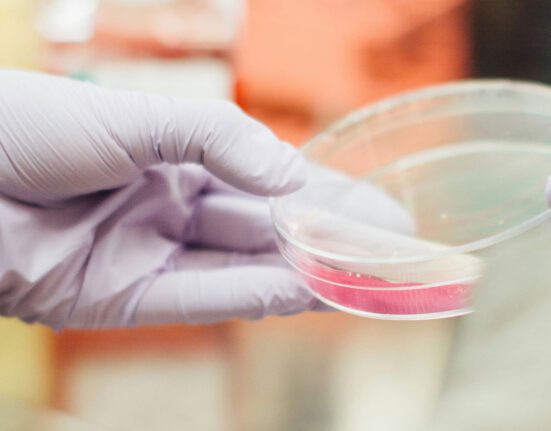What is it?
Muscle aches, or myalgias, are a prevalent symptom among those suffering from long COVID, affecting a significant portion of individuals. Understanding the underlying causes, manifestations, and demographics affected by this condition is essential for developing effective treatment strategies.
Symptoms and Causes
Muscle aches in long COVID can be persistent and severely impact daily life. The muscle pain can be widespread or localized and is often described as a deep, aching sensation. Other associated musculoskeletal symptoms include:
- Joint pain (arthralgia)
- Muscle weakness
- Chronic fatigue
- Reduced physical stamina and endurance
The exact mechanisms behind muscle pain in long COVID are not fully understood. However, several potential factors contribute to these symptoms:
- Inflammation: Chronic inflammation triggered by the immune response to the virus can lead to ongoing muscle pain.
- Immune System Dysregulation: Long-term immune dysregulation may cause the body to attack its own tissues, including muscles.
- Direct Viral Effects: SARS-CoV-2 may have direct effects on muscle tissues, either through viral persistence or by causing lasting damage during the acute phase of the infection (JAMA Network) (American Medical Association).
Who Gets It
Long COVID and its associated muscle aches can affect anyone who has had COVID-19, but certain groups are more susceptible:
- Older Adults: Individuals over the age of 60 are more likely to experience prolonged symptoms.
- Females: Women are reported to have a higher incidence of long COVID symptoms, including muscle aches.
- Severe Initial Symptoms: Those who had more severe acute COVID-19 symptoms are at greater risk for long COVID.
- Pre-existing Conditions: Individuals with pre-existing health conditions such as cancer, high body mass index (BMI), and those who smoked tobacco are more likely to suffer from long-term symptoms.
A study involving 3,972 participants found that approximately 32.5% of those who had COVID-19 reported at least one persistent symptom two months post-infection. Among these, muscle pain was a common complaint (JAMA Network) (American Medical Association).
Muscle aches, a common symptom, often involve generalized or localized pain, weakness, and fatigue. Those at higher risk include older adults, females, individuals with severe acute symptoms, and those with pre-existing health conditions. Management involves a multidisciplinary approach, including physical therapy, pain management, and regular medical follow-up.
Long Covid The Answers
Relief
The information provided is for educational purposes only and does not substitute for professional medical advice. Always consult a medical professional or healthcare provider to seek individual medical advice, diagnosis or treatment.
A team-based approach involving primary care physicians, specialists, physical therapists, and mental health professionals is often necessary to provide comprehensive care
- Physical Therapy and Exercise
- Gentle Stretching and Strengthening Exercises: Regular physical therapy focusing on gentle stretching and strengthening exercises can help alleviate muscle pain and improve overall function. According to a review in JAMA, tailored physical therapy programs can significantly improve musculoskeletal symptoms in long COVID patients (JAMA Network).
- Gradual Increase in Activity: Gradually increasing physical activity levels can help manage symptoms without exacerbating fatigue. The American College of Sports Medicine recommends starting with low-intensity exercises and slowly increasing duration and intensity as tolerated (American Medical Association).
- Pain Management
- Medications: Over-the-counter pain relievers like acetaminophen and nonsteroidal anti-inflammatory drugs (NSAIDs) can help manage mild to moderate muscle pain. For more severe pain, a healthcare provider might prescribe muscle relaxants or other pain medications (JAMA Network) (American Medical Association).
- Topical Treatments: Topical analgesics, such as creams containing capsaicin or menthol, can provide localized relief for muscle aches.
- Complementary Therapies
- Acupuncture: Acupuncture has been shown to reduce musculoskeletal pain and improve function in various conditions, and it may offer relief for long COVID-related muscle aches. Studies published in JAMA Network Open have indicated positive outcomes with acupuncture for chronic pain management (American Medical Association).
- Massage Therapy: Regular massage therapy can help reduce muscle tension, improve circulation, and alleviate pain. A systematic review in The Cochrane Database of Systematic Reviews supports the use of massage for musculoskeletal pain relief.
- Lifestyle Modifications
- Hydration and Nutrition: Staying well-hydrated and maintaining a balanced diet rich in anti-inflammatory foods can support muscle recovery. Foods high in omega-3 fatty acids, such as fish and flaxseed, and antioxidants, such as berries and leafy greens, may help reduce inflammation.
- Adequate Rest: Ensuring adequate rest and sleep is crucial for muscle recovery and overall well-being. Poor sleep can exacerbate pain and fatigue, so adopting good sleep hygiene practices is essential.
- Psychological Support
- Cognitive Behavioral Therapy (CBT): CBT can help manage the psychological burden of long COVID, including pain perception and coping strategies. A study in The Lancet Psychiatry highlighted the benefits of CBT in improving quality of life for chronic pain patients, which can be extrapolated to those with long COVID
- Support Groups: Joining support groups for long COVID can provide emotional support and practical advice from others experiencing similar symptoms.
- Monitoring and Follow-Up
- Regular follow-up with healthcare providers is crucial for monitoring symptoms and adjusting treatment plans as needed. Multidisciplinary care teams, including primary care physicians, specialists, and physical therapists, can provide comprehensive management tailored to individual needs.
By combining these evidence-based approaches, patients with long COVID can find relief from muscle aches and improve their overall quality of life. It’s important to work closely with healthcare providers to develop a personalized management plan.
Credible Information
Coming Soon



